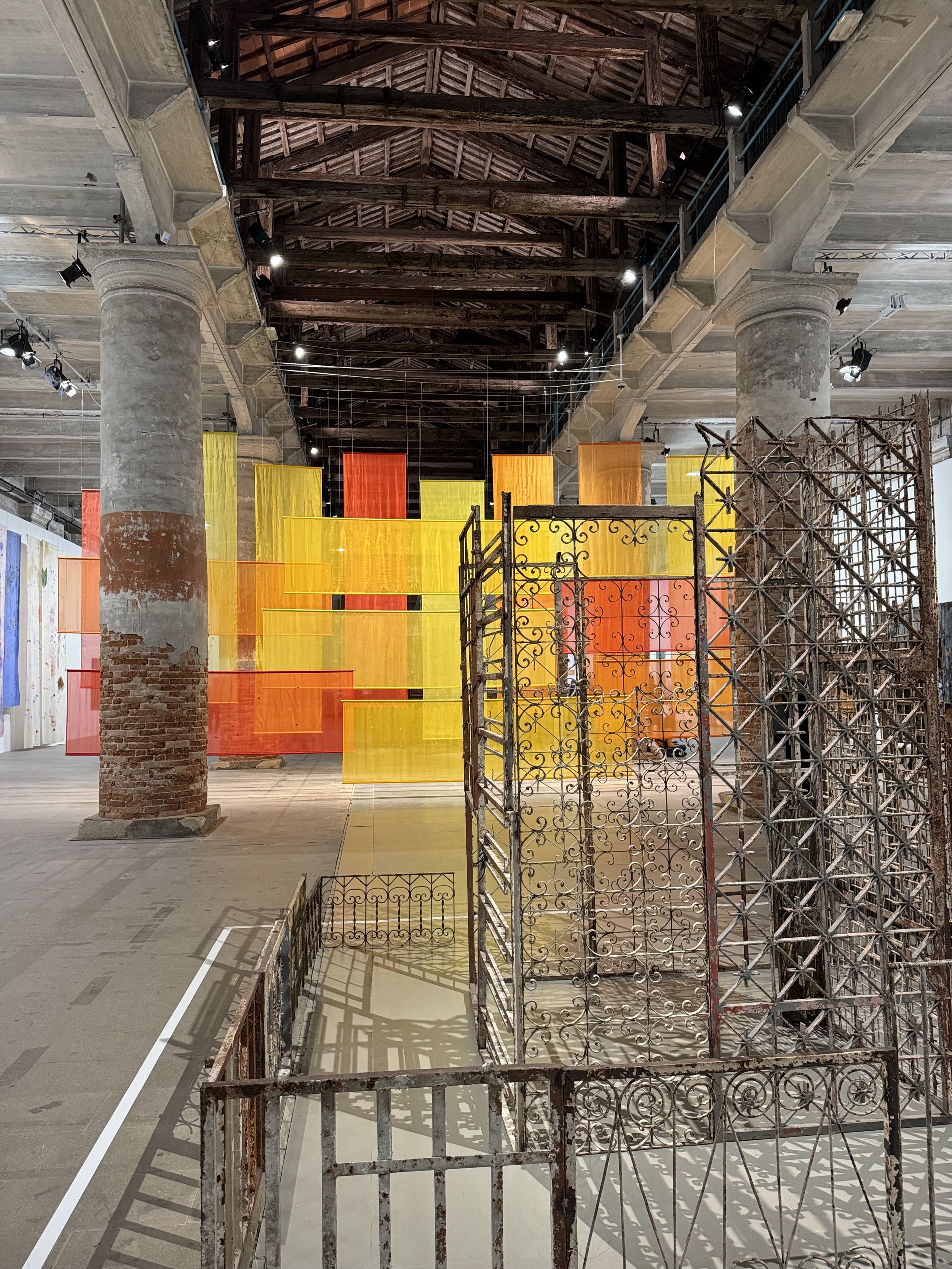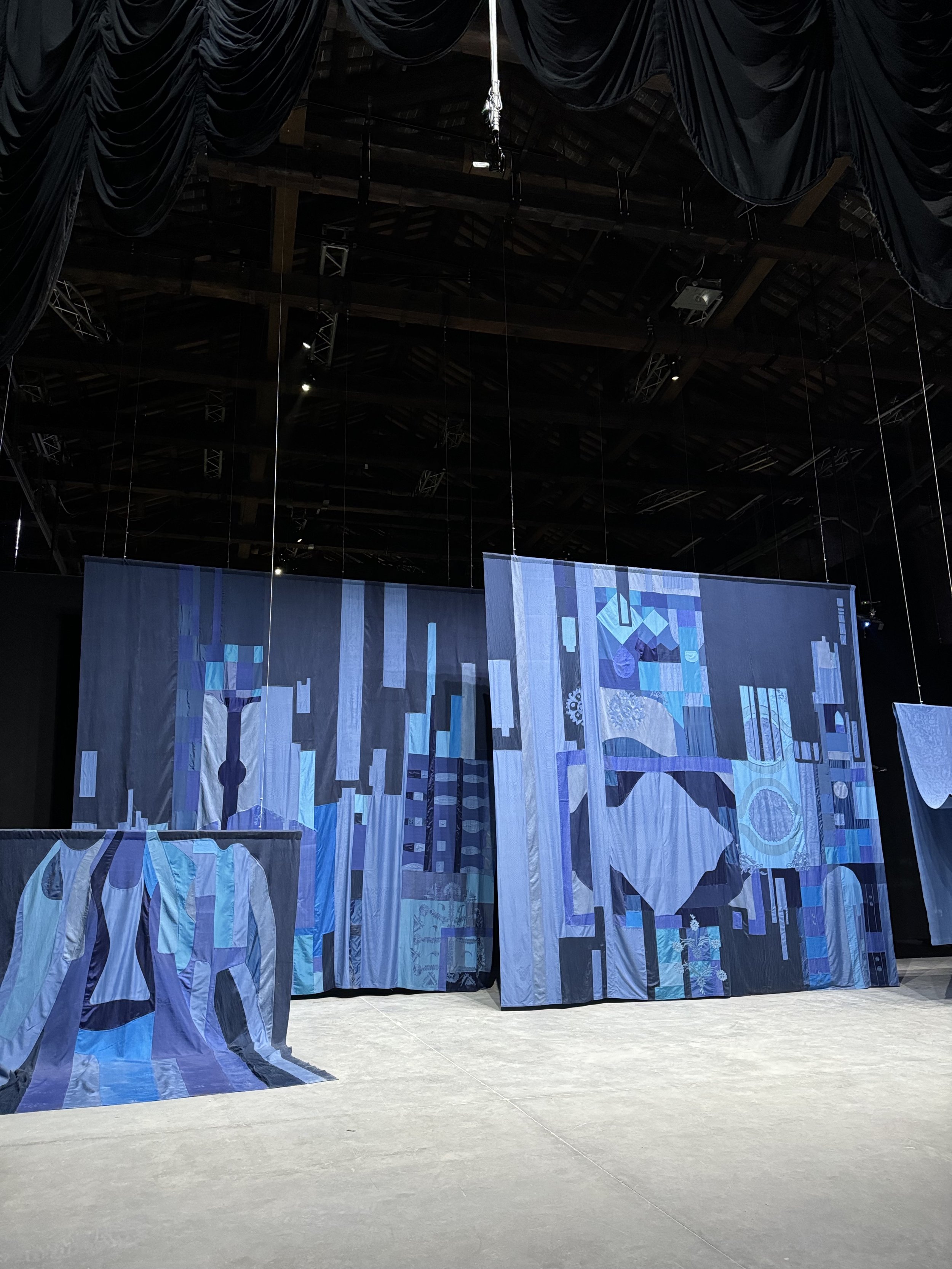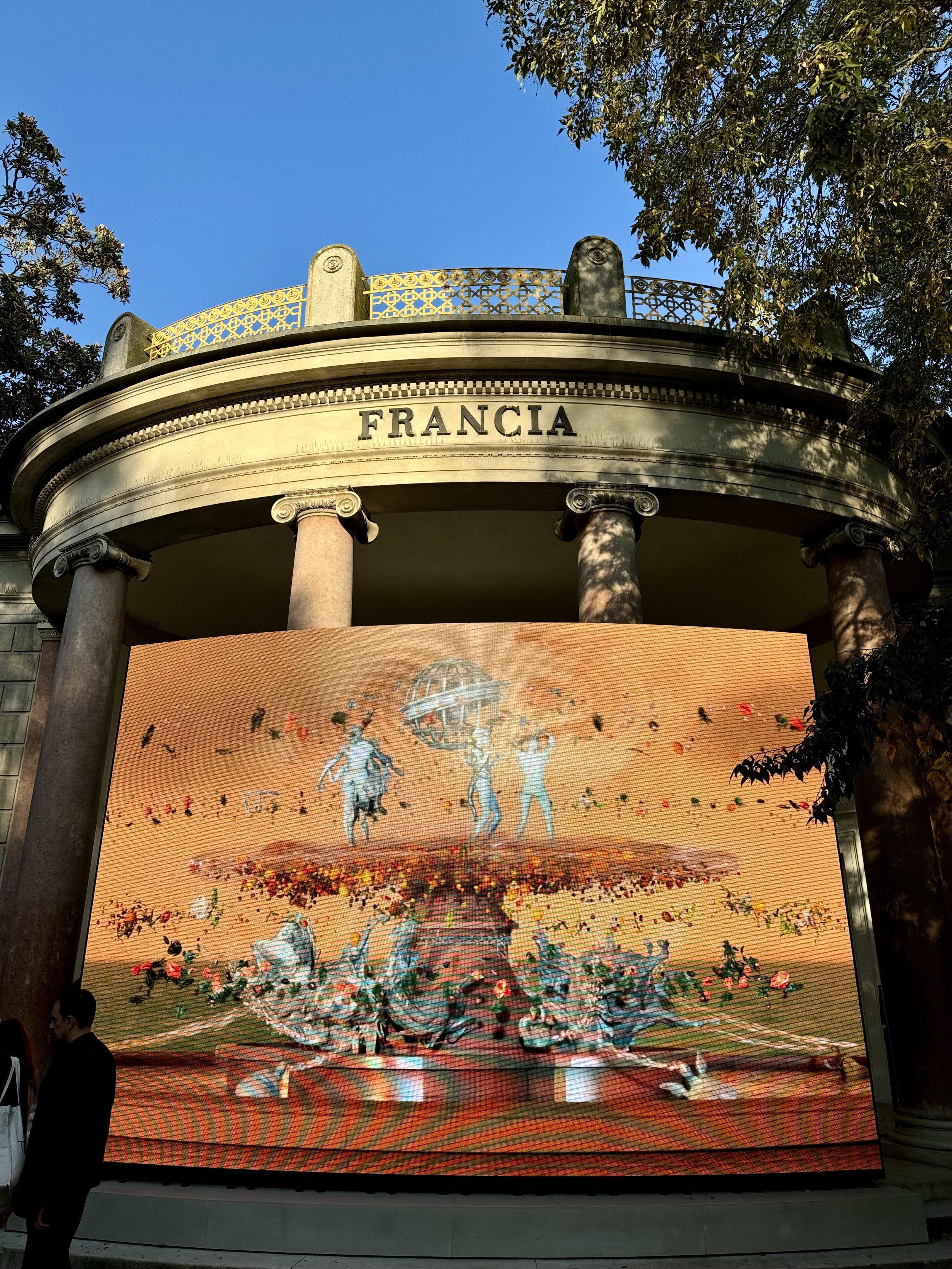Venice Art Biennale 2024: What we LOVED!
This November, we immersed ourselves in the profoundly evocative experience of the 2024 Venice Art Biennale. This year, under the theme Stranieri Ovunque ("Foreigners Everywhere"), the Biennale explored what it means to exist as “foreign” across cultures, borders, and communities. Curator Adriano Pedrosa’s vision is bold, spotlighting marginalized voices and reshaping narratives that have too often been excluded from mainstream art spaces.
From installations that moved us to introspective silence to bold statements that sparked dialogue, this Biennale stretched beyond the visual, asking us to confront global issues of identity, heritage, and belonging. Here are some reflections on the pieces that resonated most deeply with us.
Embracing Indigenous Narratives and the Legacies of Colonialism
This year’s Biennale highlighted Indigenous perspectives in unprecedented ways, spotlighting artists who are reclaiming their stories in a world that has often silenced them. The Australian pavilion, one of the most celebrated spaces, showcased Archie Moore’s installation, kith and kin. This piece utilized a genealogical chart that spanned 65,000 years, tracing Moore’s Kamilaroi and Bigambul lineage alongside British and Scottish heritage. The installation conveyed the emotional weight of colonial legacies, symbolized by a towering pile of reports on deaths of Indigenous people in police custody—a stark reminder of ongoing systemic injustices in Australia
In the same spirit, New Zealand’s Mataaho Collective presented a delicate, light-infused woven structure, exploring matrilineal textile traditions. This installation was both beautiful and powerful, capturing the ancestral wisdom that resides in craft and offering a visceral connection to heritage. Their work filled the pavilion with shifting patterns of light, creating a sanctuary-like atmosphere that honored their cultural roots. These pavilions reminded us of the art world’s growing recognition of Indigenous artistry, not as an exoticized “other,” but as central voices in the global narrative.
The Intersection of Queer Identity and Domestic Intimacy
The Arsenale’s main exhibition included intimate explorations of LGBTQ+ experiences, creating a safe space for themes of love, identity, and belonging. Artists like Louis Fratino and Bhupen Khakhar brought deeply personal works that captured moments of daily life, inviting viewers into the quiet beauty of queer domesticity. Fratino’s paintings, with their soft hues and gentle brushwork, illustrated private moments of affection and self-reflection, portraying queer love as both universal and uniquely tender
Bhupen Khakhar’s pieces took on a more narrative tone, weaving traditional Indian art styles with contemporary themes. His work offered a layered look at queer relationships in a cultural context where such topics are often taboo, reminding viewers of the courage needed to live authentically in societies that may not accept them. This aspect of the Biennale allowed a rare look into the intimate aspects of LGBTQ+ life, challenging viewers to see the universality of love and companionship across all identities.
Come, Let Me Heal Your Wounds. Let Me Mend Your Broken Bones by the Palestinian artist Dana Awartani.
Credits : Ines Bejot
Stories of Migration and the Fragility of Belonging
In a world marked by constant movement and migration, several installations at this Biennale touched on the dislocation experienced by migrant communities. Nil Yalter’s piece was particularly memorable—a tent-like structure, inspired by Central Anatolian nomadic architecture, housing stories of migrant workers. Using multimedia elements, Yalter depicted the resilience and vulnerability of migrants, whose labor often sustains economies far from their homelands but who remain “foreign” in their adopted countries.
Bouchra Khalili’s Mapping Journey Project was another standout in this exploration of displacement. Khalili’s work documented the migration routes of individuals across the Mediterranean and Middle East, drawing lines on maps to represent physical journeys of courage and hardship. Each line on these maps was a testament to human resilience, challenging us to consider borders as fluid, human experiences rather than rigid geographical markers. Through these installations, the Biennale prompted a powerful dialogue on the very concept of “home”—a concept that feels increasingly fragile amid climate change and global unrest.
Bold Statements on Environmental and Social Responsibility
The 2024 Biennale also underscored the art world’s growing engagement with climate change and ecological justice. The collective from Brazil, MAHKU, brought an installation that was both vibrant and raw, incorporating Indigenous Brazilian mythology and iconography to comment on environmental degradation and the exploitation of natural resources. Their bold murals were not just visually captivating but a call to action, urging viewers to consider the relationship between modern industry and the traditional lands it often displaces.
In the Danish pavilion, artist Lea Porsager presented Cosmic Undulations, a mesmerizing piece that combined sound and organic materials to simulate the interconnectedness of ecosystems. This installation reminded us of the intricate webs within our environment, suggesting that a disruption in one area has ripple effects elsewhere. By engaging with these themes, the Biennale created space for reflection on our collective responsibility to protect both the cultural and ecological worlds we inhabit.
Aguacero: Water Everywhere - Daniel Otero Torres
Credits : Ines Bejot
Uzbekistan Pavilion - Don’t miss the cue
Credits : Ines Bejot
Reflecting on Belonging in a Globalized World
As we moved between the Giardini and Arsenale, it was clear that Pedrosa’s curation emphasized art’s role in fostering empathy and understanding across cultures. Each pavilion and installation offered new insights into the concept of “belonging,” with artists challenging the very definitions of identity, nationality, and community. Stranieri Ovunque was not merely a theme—it was a deeply resonant question posed to everyone: Where do we belong, and how do we connect across divides?
The Biennale’s inclusive curation allowed us to experience art not only as spectators but as participants in a global dialogue. By amplifying voices from Indigenous, queer, and migrant communities, the Biennale created a richer, more nuanced experience of the human condition. In the end, the 2024 Venice Biennale felt less like a series of exhibits and more like a journey—a journey that asked us to confront our own perceptions and prejudices, while celebrating the shared humanity that binds us all.
French Pavilion - Biennale Arte Venice
Credits : Ines Bejot
Inside the French Pavilion - Biennale Arte Venice
Credits : Ines Bejot
Four Pavilions Who Captivated Us
Saudi Arabia Pavilion
The Saudi Arabia Pavilion is represented by the artist Nour Al-Shammari, who creates immersive installations that address themes of identity, memory, and the impacts of globalization. Al-Shammari's work draws on personal narratives and cultural heritage, inviting viewers to reflect on their own experiences in relation to these broader topics. The pavilion emphasizes a dialogue about the intersection of tradition and modernity within Saudi society
Philippine Pavilion
The Philippine Pavilion features the installation "Sa kabila ng tabing lamang sa panahong ito" (Waiting just behind the curtain of this age) by Mark Salvatus. The work intricately weaves themes of renewal, environmental stewardship, and cultural history. Viewers navigate through translucent curtains to experience a film showcasing musicians in the lush surroundings of Mount Banahaw, accompanied by sounds that blend natural and musical elements. This exhibition honors the legacy of historical figures in the Philippines and encourages reflection on the relationship between humans and their environment.
Italian Pavilion
The Italian Pavilion is curated by Lorenzo Benedetti and showcases the work of Silvia Giambrone. Giambrone’s installations incorporate various media to explore themes of femininity, strength, and resilience. Her thought-provoking pieces often challenge societal norms and invite viewers to engage critically with contemporary issues surrounding gender and identity.
French Pavilion
At the French Pavilion, Diana Policarpo presents a multi-sensory installation titled "In the body of the water". Policarpo's work focuses on the relationship between water and human existence, exploring themes of fluidity, memory, and ecological consciousness. The installation invites visitors to consider their own connections to water and its significance in our lives.
Saudi Pavilion - Biennale Venezia
Credits : Ines Bejot
Final thoughts
For those who seek art that goes beyond aesthetics and into the realm of transformation, the Venice Biennale 2024 was an unmissable experience. It was a reminder that art can challenge, provoke, and heal, creating spaces where stories of resilience and resistance come alive. The theme Stranieri Ovunque was not only relevant but timely, reflecting a world that is increasingly interconnected yet divided. In every pavilion, we found pieces that lingered with us, offering new ways to understand our shared and diverse identities.
Whether you are an art lover, an advocate for social change, or simply someone curious about the global human experience, this Biennale was a profound journey. The experience left us with a renewed appreciation for the power of art to bridge divides and foster empathy—a fitting end to a Biennale that truly redefined what it means to belong.








